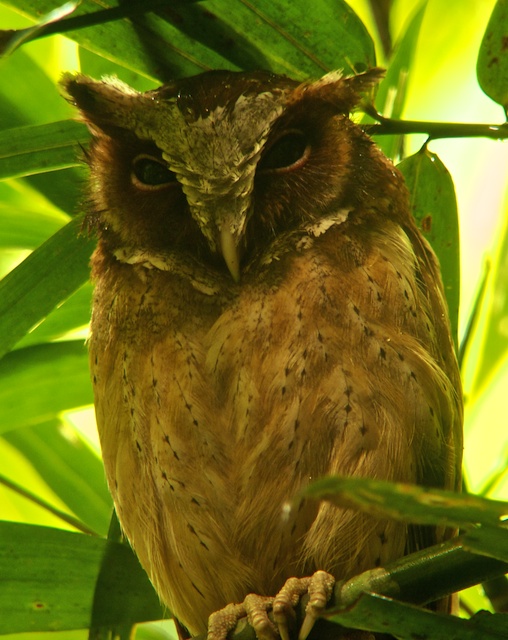Asian glossy starling
Aplonis panayensis
นกเอีี้้ยงดำปักษ์ใต้
Chumphon 13.08.10
Chumphon calls itself the gateway to the south of Thailand. It lies just off the Gulf of Thailand about halfway down the peninsula. It is also home to an increasingly important annual Raptor Watch in the autumn when tens of thousands of raptors, oriental honey buzzards, Japanese and Chinese sparrowhawks, black bazas and smaller numbers of eagles and other raptors can be observed on their southbound migration to warmer climes. It was my good fortune to have a few hours' birding on Friday 13th August 2010 with Chukiat Nualsri, one of the leading lights of the Raptor Watch and the Thai birding scene.
Initially we were going to head to the north of Thailand to Mae Wong in search of crested kingfisher. However "we" include a 13 month old boy and a non-birding mother and in view of the weather I thought it might be too much and possibly dangerous to inflict Mae Wong on them, especially as reports suggest that the wet season means a lot of rain and a lot of biting insects. So we decided to head south to Chumphon where there are alternatives in the event of inclement weather and adverse conditions. I dropped Chukiat an email and he was happy to show me round some of the local sites. I have to say what a blessing it is to have a local guide because I would never have found the places he took me to all of which are easily reached from the centre of Chumphon.
If you will allow me to combine starlings and mynas then this turned into a starling masterclass and I very much doubt this would have happened had I been left to my own devices. I say this because I think if I am going to be honest I would have overlooked the mynas we saw at our first stop, a field at the rear of the sports stadium. It was full of buffalos and swamphens, an intermediate egret, cattle egret and lots of mynas. Chukiat pointed me to a jungle myna and on closer observation I could see it was similar to the common myna but in fact quite distinct; no yellow facial skin, an orange bill with a bluish base, a black head and light body, yellow eyes, a very short crest.... in other words totally different! And a lifer.
Being a simple soul I would have assumed it couldn't be a jungle myna because I wasn't, errrr, in a jungle! The Thai name means "buffalo starling" so not much of a surprise to see them in a field full of buffalo! Indeed I wished I had set up my rig as I might have got a decent shot of a couple of these birds on top of a buffalo. Then a couple of white-vented mynas flew in distinguished by their dark colours and prominent crest. Of course their key diagnostic is the white vent. Fortunately the crested myna is a very rare bird......
There were at least 25 purple swamphen in the field. I don't think I have ever seen so many in one place, as common as openbills are up here in Ratchaburi. Chukiat told me he had seen a number of quite rare birds here over the years including an oriental plover earlier this year.
Jungle myna
Acridotheres fuscus
นกเอีี้้ยงควาย
Chumphon 13.08.10
On our second stop we saw some lesser coucals, a white-throated kingfisher and then more starlings: firstly a couple of vinous-breasted starlings and then soon after a couple of black-collared starling, both lifers. I would have to say these latter starlings are really beautiful, very intricately coloured and that the drawings in my field guides don't really do them justice. According to Chukiat the books show them as resident all over Thailand but he reckons he is the only person to have seen them in Chumphon and he added that I can now claim to be the second birder to have seen black-collared starling there! And then two asian pied starling flew in just for good measure.
We then had a short drive along the coast near Chumphon which yielded a Malaysian plover, a curlew, a few sand plovers, pacific reef egret, (dark morph), little heron and a fair few common sandpipers. These latter fellows must be recent arrivals. We then went to a local school in Chumphon to see asian glossy starling, one of my favourite birds, and while there a jungle myna popped up to say hello. I got my digiscope rig out and managed to catch a couple of shots. Not bad, seven sturnidae in a morning. Thanks to Chukiat for a fascinating morning.
On Saturday Luna, Benedict & I drove out to Mo Kho Chumphon National Park where we had a pleasant walk in the new mangrove walkway. It didn't yield many birds, a beautiful mangrove whistler, a lifer, collared kingfisher,a little heron and an unidentified little one, maybe an olive backed sunbird.
Little heron
butorides striatus
นกเยางเขียว
Chumphon 14.08.10
The mangrove walkway next to the park headquarters has been completed recently and I have to say it will be difficult to find a better mangrove walkway in Thailand. It covers a considerable area on both sides of a river, connected by a bridge. We were able to wheel a baby buggy around it without too much difficulty though I think it would be impractical for a wheelchair. Great facilities including usable (clean!) toilets, a restaurant and very helpful and friendly staff. In a different season at a different time this mangrove may yield some very good birds. Definitely recommended and I'd be interested to hear reports from other visitors.






























